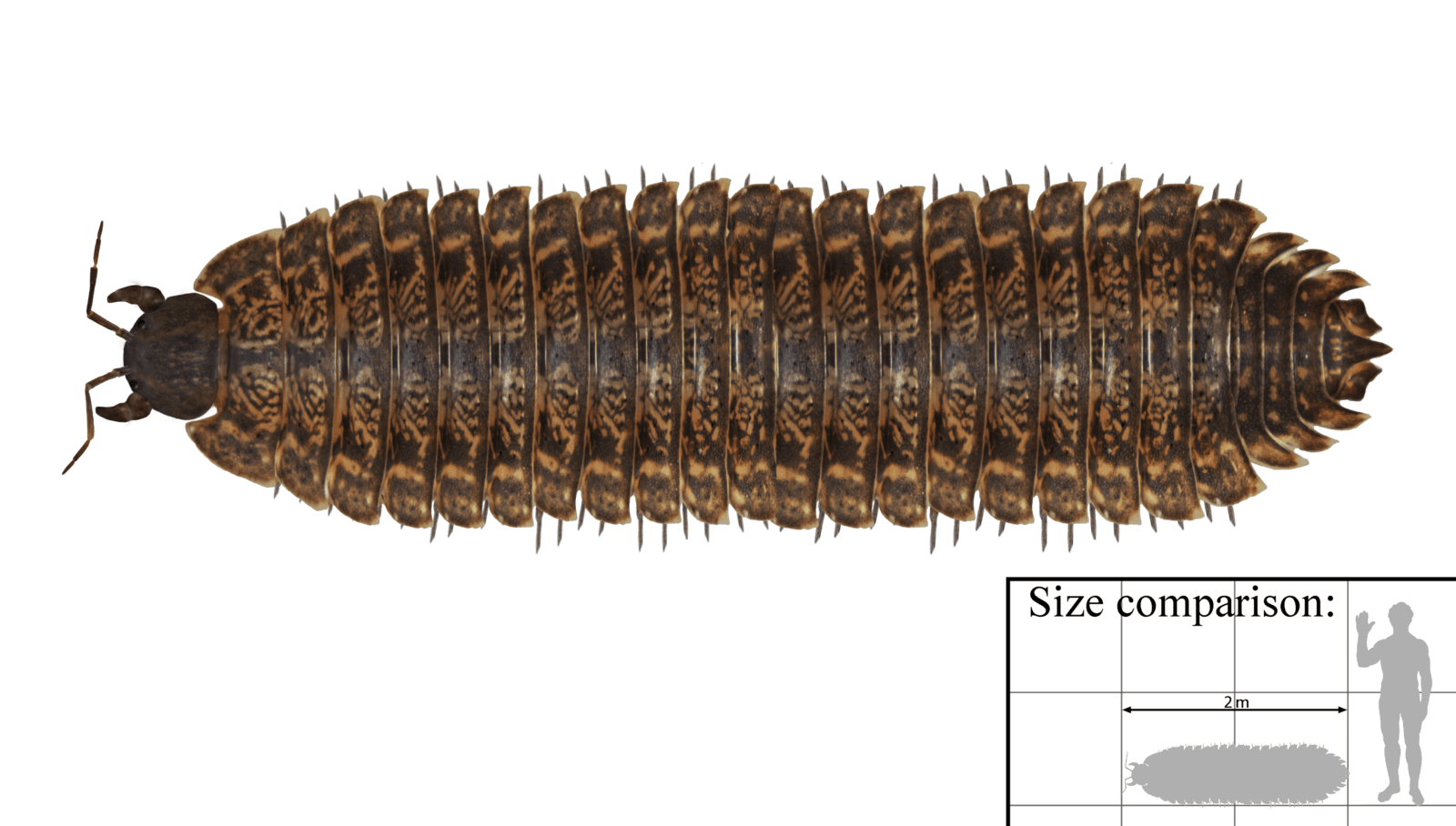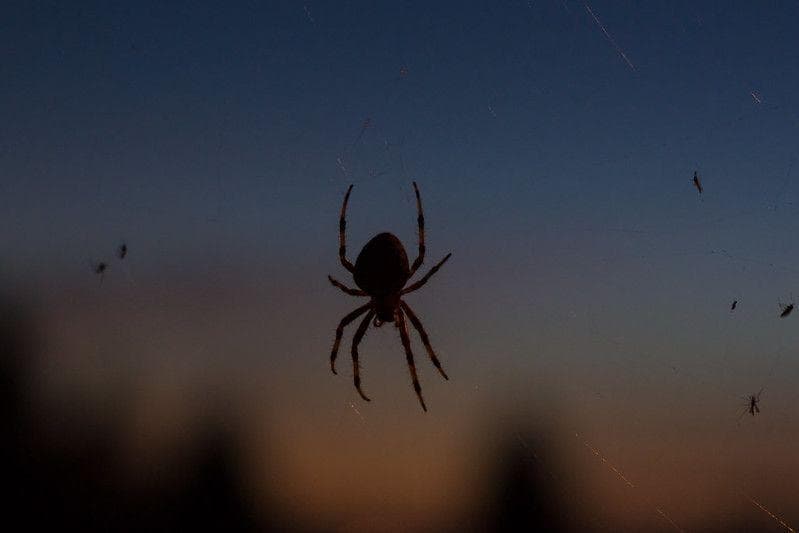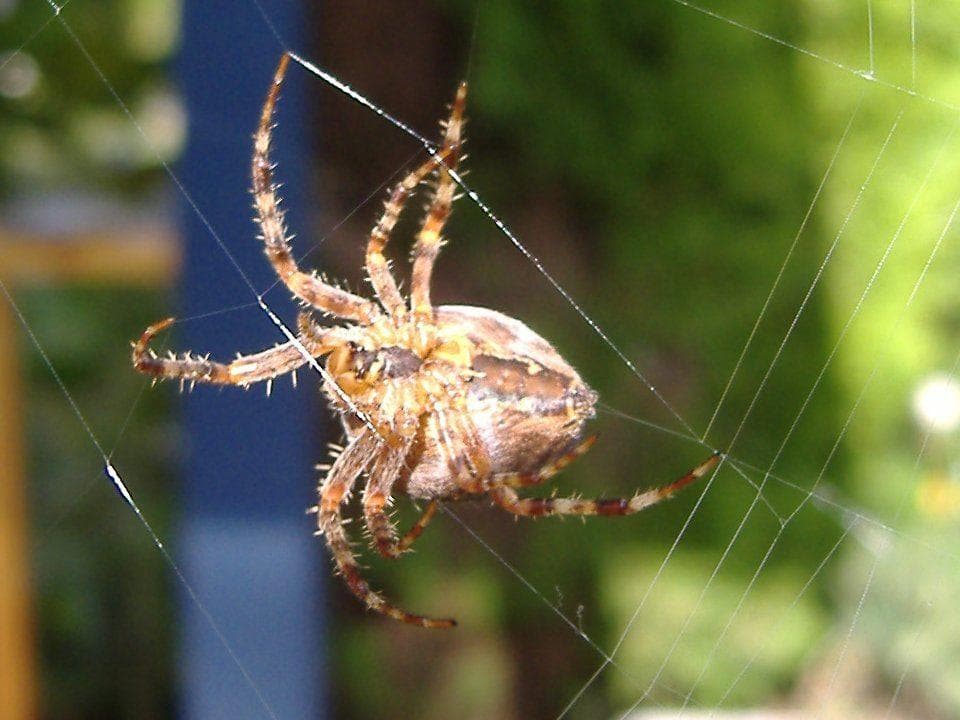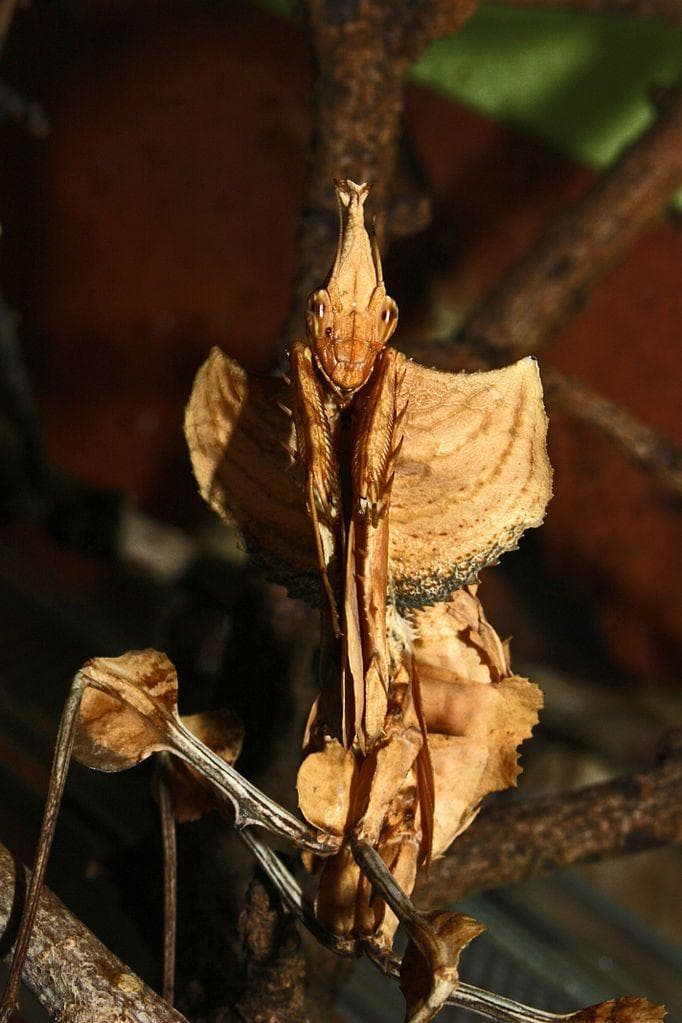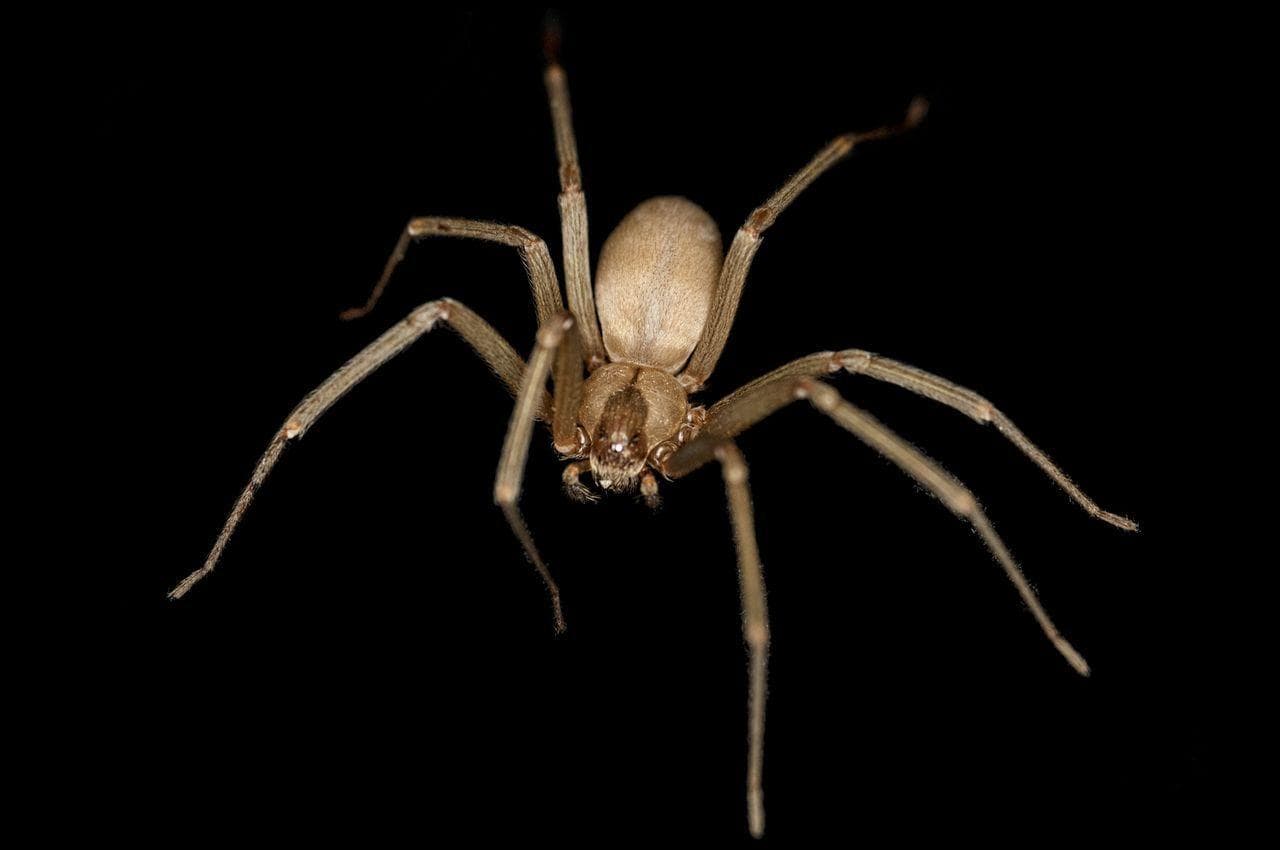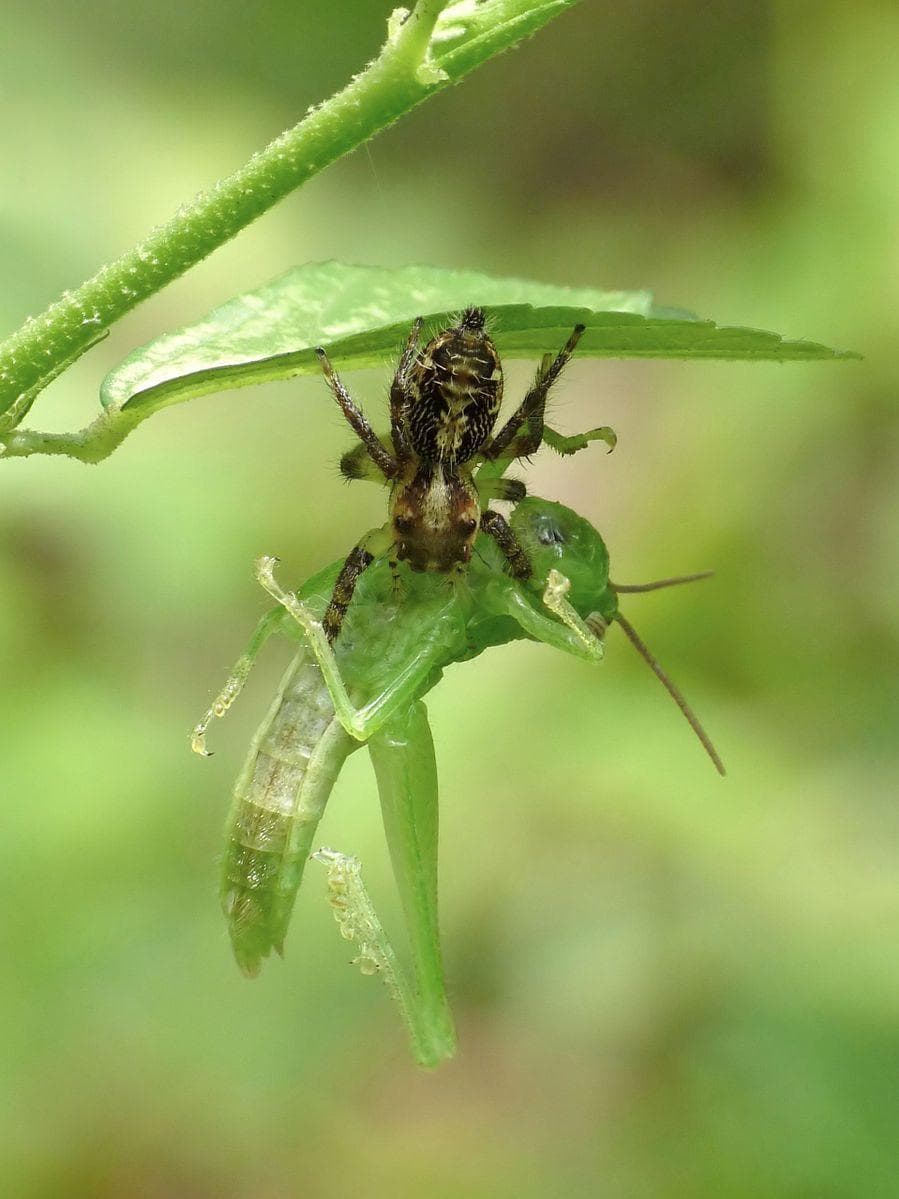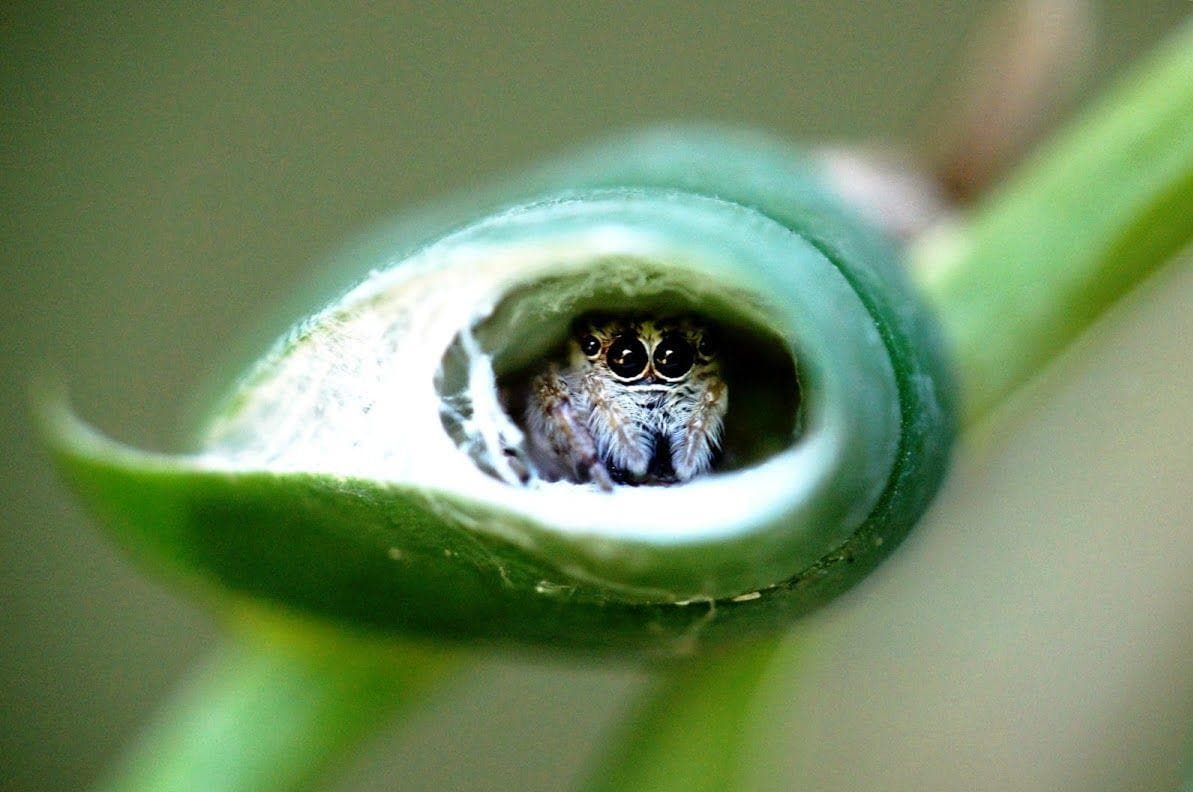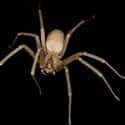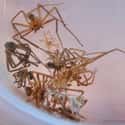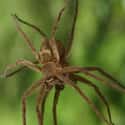-
(#1) A Bite Won't Cost Your Your Life – But It Might Cost You A Limb
The venom from a brown recluse spider packs a punch, but it rarely kills anyone. Reported deaths from the brown recluse include only very young children. Though it may not kill you, a bite from a brown recluse should still be considered quite dangerous. Brown recluse venom is highly poisonous, even more so than that of a rattlesnake, though thankfully the spider can only inject a small amount through skin. Initial symptoms appear between two-to-eight hours after the bite and include nausea, fever, and itching.
When left untreated the venom really takes its toll. The high toxicity of the venom wreaks havoc on skin cells and tissue and may cause necrosis. In severe cases, the venom causes the flesh around the bite to be eaten away, possibly even resulting in removal of limbs. Kidney failure, comas, and even death can occur as secondary effects of a brown recluse bite.
-
(#2) Some Say You Can Identify Them By Their 'Violin' Shape, Though That's Only Half-True
Plenty of brown spiders exist in various sizes, so how do you know you're up against the venomous brown recluse? Well, some people also call the brown recluse the "fiddleback" spider, a useful moniker to help you identify a potential recluse. For years, people searched for a marking shaped like a violin that appears on the spider's backside as a means of identifying them. However, it turns out this 'violin' actually appears near the spider's eyes, meaning in order to identify the fiddle shape, you need to zoom in on it. If you think you came in contact with a recluse, you can always look for the violin. Just don't get too close!
-

(#3) Brown Recluse Spiders Actually Prefer 'Habitats' Made By Humans
They're not called the "brown recluse" for nothing. In the wild, they appear under rocks and logs, but these locations are not ideal real estate for a brown recluse. In fact, this arachnid prefers human environments, where dry and tucked away places exist in abundance: corners, under furniture, woodpiles, in drawers, shoe boxes, etc. Not known for aggression, a brown recluse won't bother anyone unless disturbed. The trouble is, many times, they make their home in yours. Careful next time you go fumbling through your sock drawer or cleaning out the corner of your garage.
-
(#4) They Are Masters Of Disguise
Brown recluse spiders boast a lot of look-alike spidery relations. Brown is apparently all the rage in the arachnid world, so you must look closely to make sure the brown spider you spotted is an actual brown recluse. Looking for the fiddle on its back is a great start, but unfortunately, a lot of brown spiders have somewhat similar markings. The key is to look at the eyes. Most spiders have two sets. Brown recluse spiders have three.
-
(#5) Brown Recluse Spiders Take Their Time Growing Up
After birth, many spiders hit the ground ready to go, reaching full maturity in a matter of weeks or a few months. The brown recluse however develops at a slower pace, taking up to a year or more to reach maturity. They spend a few weeks on their mother's back before eventually heading out on their own. In the wild, they live an average of two years, but some scientists suspect they can live up to 10 years thanks to their ability to survive on little food.
-
(#6) They Go For Long Periods Without Food Or Water
True to their names, brown recluses can hide out for months at a time without any nourishment. Most insects shrivel up and die after a few days or weeks without food and water, but arachnids boast a staying power insects can only dream of. According to experiments, some brown recluse spiders can live for up to 10 months with no nourishment or water (though some say two years is possible too); even more impressive, they can hold out for six months in sealed plastic containers with no air. This survival trait plays in perfectly with their preference of habitats, such as inside of drawers and boxes, where food and water generally come in short supply.
-

(#7) They Produce A Bizarre Type Of Silk, Using It To Create Clumps Instead Of Webs
Brown recluse spiders never bother spinning elaborate webs. Too much work, especially in a dark, cramped attic corner where space is already hard to come by. Besides, recluses produce a different type of silk than other spiders, the fibers flat and thin as opposed to the standard round shape. Even weirder, the silk sports little dots on it. Despite its thinness, the silk is found to be among the strongest out there, comparable to a Kevlar bulletproof vest. Scientists believe vibrations in the web alert the spider of nearby prey and/or threats.
-
(#8) They Prefer To Hunt Rather Than Capture Their Prey
Recluses prefer the thrill of the hunt rather than waiting on the web to finish the job. They venture out at night, catching their meals and eating them fresh. To hunt, the spider will bite its prey and let the venom run its course, sometimes even waiting a few days for the prey to eventually die before consuming it.
-

(#9) The Brown Recluse Confines Itself To Certain Parts Of The United States
The scary reputation of the brown recluse spider precedes itself all over North America. Though the spider is seldom seen and seldom biting, some people express irrational fears about getting bitten, even though the brown recluse lives nowhere near to their home. Basically, the brown recluse is endemic to the American South and Midwest, though they have been known to venture further afield. That said, reports of brown recluses in California and Florida have happened, a testament to the arachnid's ability to hide away in boxes and containers. Before you move in to a new home, make sure you don't bring along any unwanted guests.
-

(#10) Their Bite Is Often Misdiagnosed
Because of the spider's small size and its tendency to hide in places close to humans, many people never realize they've been bitten, at least at the time of contact. Patients who never saw a spider bite them might suspect another malady when they start coming down with symptoms. A number of misdiagnosed cases have been reported, including diagnosing brown recluse bites as diabetic ulcer, herpes, fungal infections, Lyme disease, and even syphilis.
Unfortunately, the symptoms of a bite often resemble symptoms of other diseases, leading certain professionals to coin the phrase "NOT RECLUSE." Experts hope this mentality might help patients and professionals from accidentally conflate Staphylococcus aureus, a terrible infection, with a spider bite. In fact, misdiagnosing a brown recluse bite is something of a problem, with experts fearing many medical conditions are overlooked or simply deemed as spider bites when recluse bites are relatively rare.
-
(#11) Unlike Most Spiders, The Brown Recluse Sports Three Pairs Of Eyes
Another interesting fact which sets the brown recluse apart from other, similar spiders has to do with its eyes. Most spiders sport two sets of eyes; the brown recluse has three. The better to see and avoid you with!
New Random Displays Display All By Ranking
About This Tool
Brown recluse spiders are shaped like the body of a violin, and they are mainly distributed in the prairie region of the southern United States. The most obvious feature of brown recluse spiders is that there are 6 eyes on the head, which is different from ordinary spiders. They have a strong sense of domain and need to be raised separately if someone wants to raise them.
It is important to note that this type of spider is poisonous. People usually do not feel it after being bitten. After about 2 hours, the wound will be red and swelling, and blue-purple protrusions also appear, and the patient begins to feel pain. With the random tool, you could learn 11 fun facts about brown recluse spiders.
Our data comes from Ranker, If you want to participate in the ranking of items displayed on this page, please click here.


